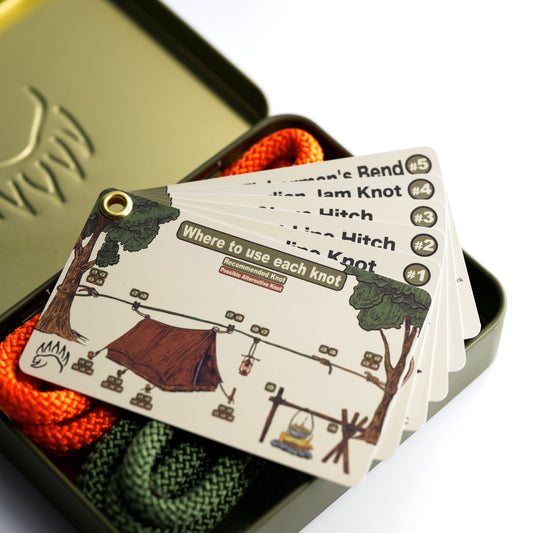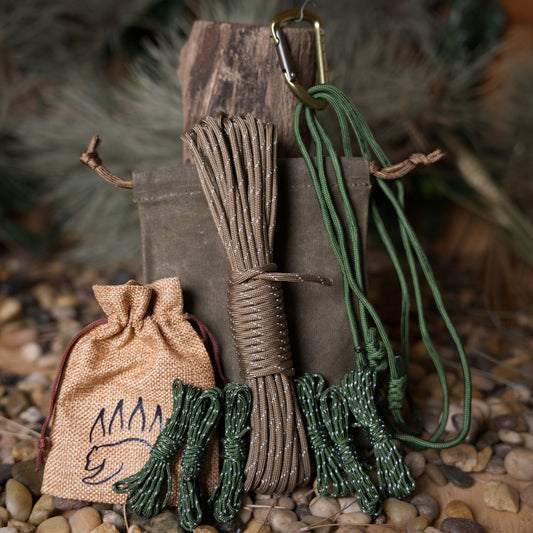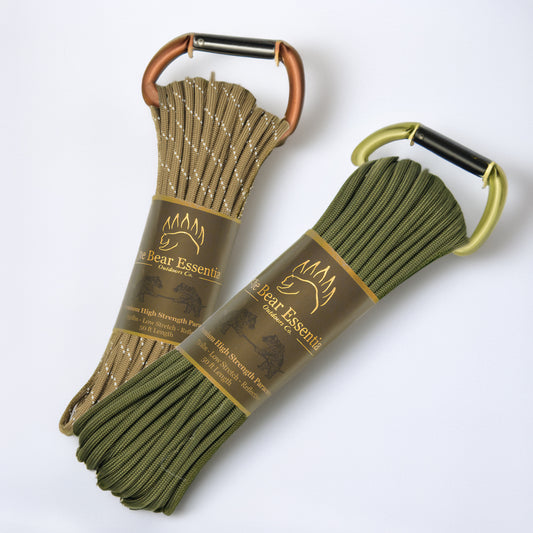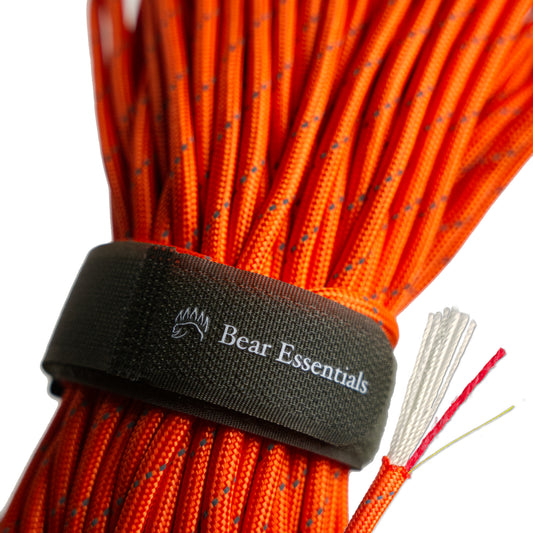How to Tie the Hunter’s Bend
Usage
The Hunter’s Bend, also known as the Rigger’s Bend, is a knot designed to join two ropes of similar diameter securely. It is particularly useful when working with synthetic, slippery ropes that require extra holding power. Unlike the Zeppelin Bend, which resists jamming, the Hunter’s Bend is known to jam under heavy strain, making it ideal for permanent joins in rope work or weaving applications.
Why Learn the Hunter’s Bend?
This bend is part of the locking overhand family and provides a strong, symmetrical, and reliable connection. While it can jam under tension, this property can be advantageous in permanent applications such as knitting, rigging, and heavy-duty rope work. However, if a bend that remains untied easily is needed, the Zeppelin Bend or Alpine Butterfly Bend are superior choices.
Common Uses
-
Rope Joining & Utility Work:
- Ideal for joining two ropes of similar diameter.
- Frequently used in rigging, industrial work, and arborist applications.
- Knitting & Weaving: Used in textiles where a permanent join is preferred.
- Outdoor & Climbing: Effective for joining synthetic ropes that tend to slip with other bends.
ABOK Number
(Ashley Book of Knots)
Other Names
TypeBends
|
Notable Features
- Secure Knot: Holds well, even in synthetic ropes that may slip with other bends.
- Jams Under Load: Can become difficult to untie after significant tension is applied.
- Symmetrical Design: Ensures even distribution of strain, increasing knot reliability.
Variations
- Dressing the knot carefully ensures proper alignment and maximum strength.
- Leaving longer tails provides extra security against slippage in high-load situations.
Similar Knots
Vice Versa Bend vs. Hunter’s Bend
- Pros: Secure and reliable.
- Cons: More complex to tie than the Hunter’s Bend.
Simple Simon Bend vs. Hunter’s Bend
- Pros: A strong, simple alternative.
- Cons: Can be difficult to untie after heavy loads.
Zeppelin Bend vs. Hunter’s Bend
- Pros: Highly secure and easy to untie.
- Cons: Slightly more difficult to tie than the Hunter’s Bend.
Alpine Butterfly Bend vs. Hunter’s Bend
- Pros: Easier to tie and adjust.
- Cons: Not as commonly used as the Zeppelin Bend.
History
The Hunter’s Bend was introduced to the public in October 1978, when an article in The Times credited its invention to Dr. Edward Hunter, who had used it for years to tie broken shoelaces. The publication led to the formation of the International Guild of Knot Tyers. However, Amory Bloch Lovins later revealed that the knot had been used as the “Rigger’s Bend” in Knots for Mountaineering (1967) and had been in use on the San Francisco waterfront since 1943.
Although the original 1944 edition of The Ashley Book of Knots did not include the Hunter’s Bend, it was later added as entry #1425A in the 1979 revision.
Security Level
The Hunter’s Bend provides a strong, stable join for two ropes but is prone to jamming under heavy tension. It is not recommended for situations where untying is necessary.
Downsides
- Prone to Jamming: Difficult to untie after bearing heavy loads.
- Easily Confused with Other Bends: Must be tied carefully to avoid mistakes.
Structure
- Form a bight in each rope.
- Interlock the two bights to create a woven structure.
- Pass each end over itself and over the other rope.
- Thread each rope under both ropes and over itself.
- Pull both ends to tighten the knot evenly.
Pro Tip: Carefully dress the knot before loading to maximize its holding power.
FAQ
What is the Hunter’s Bend used for?
It is used to join two ropes of similar size securely, particularly in rigging, synthetic ropes, and weaving applications.
Is the Hunter’s Bend better than the Zeppelin Bend?
The Zeppelin Bend is superior for most applications because it does not jam, whereas the Hunter’s Bend can become difficult to untie.
How does the Hunter’s Bend compare to the Alpine Butterfly Bend?
The Alpine Butterfly Bend is easier to tie and adjust, making it preferable for dynamic loads.
Can the Hunter’s Bend be untied easily?
No, it tends to jam under load, making it better suited for permanent connections.
Important Notes on Safety
The Hunter’s Bend is strong and reliable but prone to jamming. Use caution when employing it in situations where quick release may be needed. For non-jamming alternatives, consider the Zeppelin Bend or Alpine Butterfly Bend.









